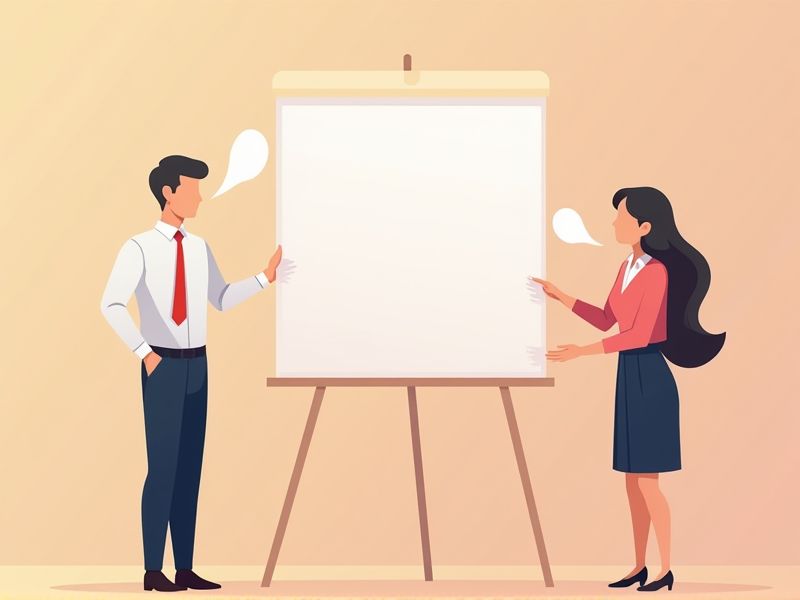
In formal conversations, clarity is essential to ensure effective communication. You may encounter situations where a clarification speech can help articulate your thoughts and address misunderstandings. This article provides a sample clarification speech to guide you in structuring your message. Key points will also be highlighted to enhance your understanding and delivery.
Short Clarification Speech Sample For Formal Conversations
Speech for clarification on policy changes in a legal context.
Speech for clarification in a corporate meeting setting.
Speech for clarification during academic conference discussions.
Speech for clarification in diplomatic negotiations.
Speech for clarification on project updates in a construction meeting.
Speech for clarification in financial forecasting discussions.
Speech for clarification in medical research presentations.
Speech for clarification in international trade agreements negotiations.
Speech for clarification in educational curriculum development meetings.
Speech for clarification in environmental impact assessment hearings.
Important Things to Know when Writing Clarification Speech Sample For Formal Conversations
Purpose Of Clarification.
Clarification speech in formal conversations is pivotal for ensuring mutual understanding and preventing miscommunication. Its primary purpose is to confirm or refine the information being exchanged, thus allowing participants to grasp the intended message fully. By seeking clarification, individuals can address ambiguities or uncertainties, fostering a more precise and effective dialogue. This practice enhances the overall quality of communication, promoting informed decision-making and collaboration.
Active Listening.
Clarification speech is a vital component of formal conversations, enhancing effective communication through active listening. It involves asking questions or paraphrasing the speaker's message to ensure understanding and clear any potential misunderstandings. This practice demonstrates attentiveness and respect, encouraging a more productive dialogue. By actively engaging in clarification, participants can build stronger connections and foster an environment of mutual respect and understanding.
Requesting Repetition.
In formal conversations, a clarification speech involves politely asking for further explanation or repetition to ensure accurate understanding. When requesting repetition, it's crucial to phrase your request in a manner that maintains the conversation's professionalism and respect. Use expressions like, "Could you please repeat that?" or "I didn't quite catch that, could you say it again?" to signal that more information or clarity is needed. This approach not only helps in fostering clear communication but also demonstrates attentive listening and a commitment to the conversation's success.
Seeking Elaboration.
A clarification speech in formal conversations is a crucial tool for ensuring clear and effective communication. Its primary purpose is to seek elaboration or additional details when information is unclear or ambiguous. By asking specific questions, the speaker encourages the other party to provide further explanation, helping to prevent misunderstandings. This approach not only enhances mutual comprehension but also fosters a more productive dialogue by ensuring that all parties have a shared understanding of the subject matter.
Paraphrasing For Understanding.
In formal conversations, clarification speech plays a crucial role in ensuring mutual understanding between parties. By paraphrasing, one can effectively confirm comprehension by restating the speaker's message in their own words, which helps to avoid misunderstandings. This technique not only facilitates clear communication but also demonstrates active listening, showing that the listener is engaged and values the speaker's perspective. Additionally, paraphrasing allows for the identification and correction of any discrepancies in interpretation, fostering a more productive dialogue.
Asking Focused Questions.
Clarification speech in formal conversations primarily involves asking targeted questions to ensure understanding and prevent miscommunication. It plays a crucial role in identifying any ambiguities and addressing them immediately, thus fostering effective communication. By asking focused questions, you can narrow down the specific areas that need more explanation, making the conversation more productive. This approach not only saves time but also demonstrates attentiveness and a willingness to engage actively in the discussion.
Confirming With The Speaker.
In formal conversations, clarification speech plays a crucial role in ensuring clear and effective communication. This involves actively confirming with the speaker by restating or summarizing what has been said, which helps prevent misunderstandings and ensures alignment between both parties. For instance, asking questions like "Did I understand correctly that you mean...?" provides an opportunity for the speaker to confirm or correct your interpretation. Ultimately, this practice fosters a cooperative atmosphere, facilitating more accurate exchanges of information.
Avoiding Assumptions.
In formal conversations, a clarification speech is a crucial technique used to ensure mutual understanding and avoid misinterpretations. It's designed to explicitly address any unclear or ambiguous points by seeking further explanation or confirmation from the speaker. This approach helps prevent the formation of incorrect assumptions and assumptions about intentions or meanings, which can often lead to miscommunication. By fostering a climate of transparency and attentiveness, clarification speeches enhance effective dialogue and collaborative decision-making.
Using Polite Language.
Clarification speech in formal conversations involves seeking additional information or confirmation to understand the speaker's intended message fully. Using polite language is crucial, as it demonstrates respect and attentiveness while ensuring clear communication. Phrases such as "Could you please elaborate on that point?" or "I want to make sure I understood you correctly; could you clarify this part?" help in maintaining a courteous tone. Employing these polite expressions not only aids in preventing misunderstandings but also fosters a positive and respectful dialogue.
Ensuring Mutual Understanding.
In formal conversations, a clarification speech is essential for ensuring mutual understanding between parties. It involves restating or summarizing what has been communicated, followed by questions to confirm accuracy and comprehension. This process helps to identify any discrepancies or misunderstandings early on, thereby facilitating a more effective exchange of information. Additionally, it fosters a collaborative environment where all participants feel their contributions are valued and understood.
